But how do you quantify the health of your customers?
Today, most companies create assumptions based on subjective factors like executive relationships and reference-ability — however, can often be blindsided if those assumptions are wrong. But what if you could leverage actual customer data alongside those subjective factors to create a holistic health score for each customer account, and view it in context across all customers over time?
We announced today a new feature in Gainsight that we’re calling Scorecards.
Scorecards follow a consistent, data-driven methodology to help you go beyond individual assumptions in your customer base, measure the impact of your Customer Success efforts, and benchmark your customers across the portfolio.
Let’s see how it works.
Step 1: Select a grading scheme
Gainsight currently supports three schemes to score your customers–numeric (0 to 100), character (e.g. A through F) and RYG (red-yellow-green). You can choose whichever works best for your unique measurement needs.
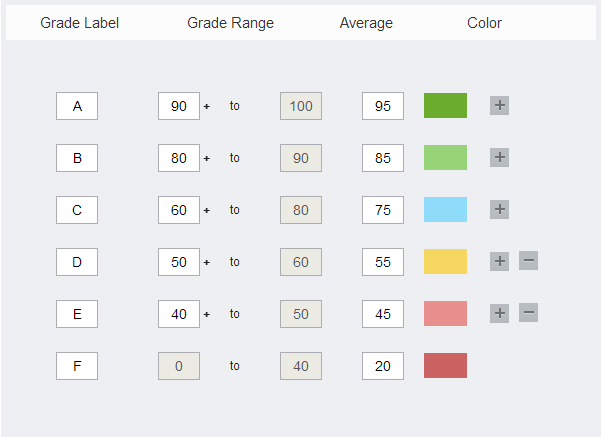
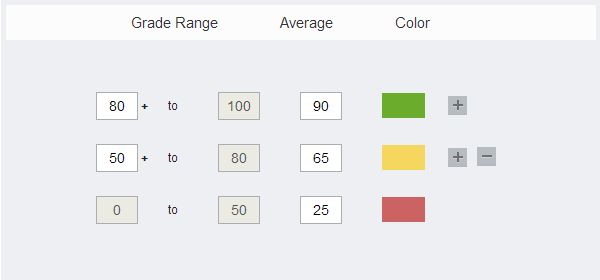
Step 2: Add and group metrics you wish to score customers on
You can add as many subjective (e.g. Executive Relationship) and objective (e.g. Aggregate User Logins, NPS) metrics as you need to create the right score, and group them together based on their type–relationship, product usage, customer segment, etc.
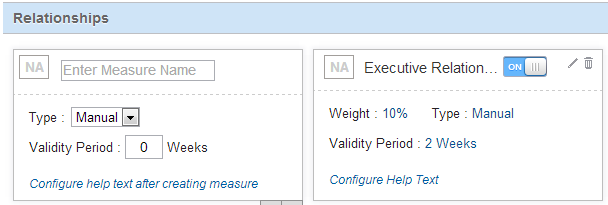
Adding a validity period ensures that you know when a score is stale and needs to be updated. You can also associate help text with every metric, so that you are always aware of what each level implies. For example, a subjective metric like “Executive Relationship” could have three levels based on how deep the relationship is.
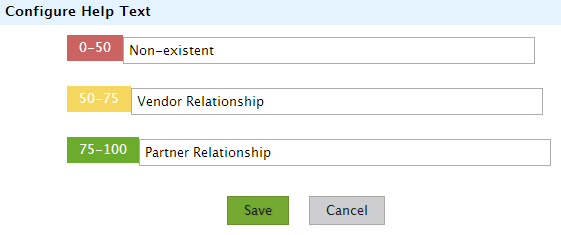
Step 3: Add weights to assign importance and build an overall customer health score
Assigning weights to each metric allows Gainsight to roll up the impact of individual scores into an overall customer health scorecard. This process is extremely helpful in that it will make you think about the relative importance of each metric.
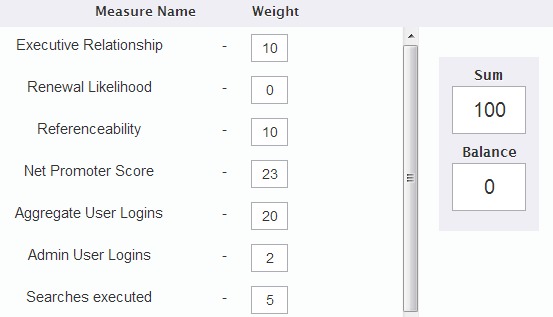
Step 4: Get started!
Now you are all set to score each customer on the chosen metrics. Both individual and overall scores are available to you from within Gainsight Customer360.
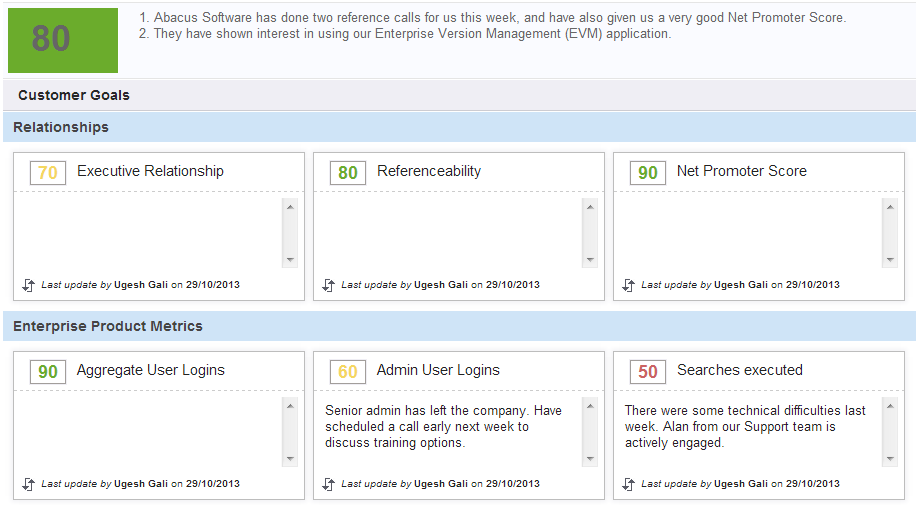
You can also compare these scores across your customer-base to see where your customers stand overall, and on each individual metric.
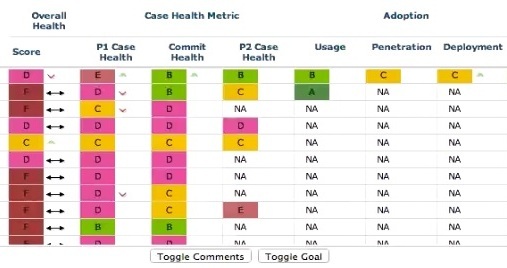
Furthermore, Scorecards also integrate with our robust rules engine to automatically generate alerts for you when a significant score change happens. Through our advanced workflow, you’ll be able to proactively act on these alerts to get a customer back to health, or drive the sale of additional products and services.
At Gainsight, we push ourselves hard everyday to make managing customers simple, easy and intuitive, so that you can concentrate on doing what you do best–make your customers successful.
Want to learn more? Join Paul Piazza, our Director of Customer Success, and I on November 14th at 11:00 AM (PST), for an in-depth discussion on how Scorecards can help you take the mystery out of customer health and drive new levels of Customer Success at your business.

Steve Buccola, Head of Product Management, Gainsight

